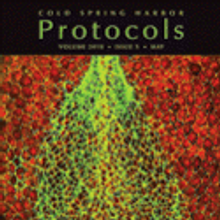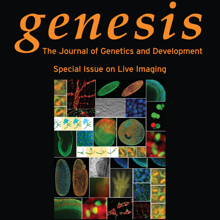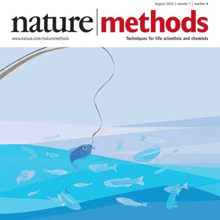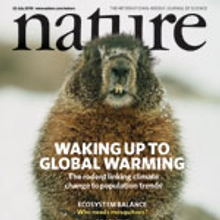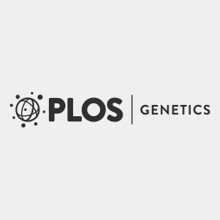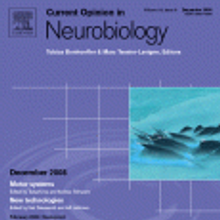Filter
Associated Lab
- Ahrens Lab (5) Apply Ahrens Lab filter
- Beyene Lab (1) Apply Beyene Lab filter
- Branson Lab (3) Apply Branson Lab filter
- Card Lab (1) Apply Card Lab filter
- Cardona Lab (1) Apply Cardona Lab filter
- Druckmann Lab (1) Apply Druckmann Lab filter
- Freeman Lab (4) Apply Freeman Lab filter
- Funke Lab (2) Apply Funke Lab filter
- Harris Lab (1) Apply Harris Lab filter
- Ji Lab (1) Apply Ji Lab filter
- Remove Keller Lab filter Keller Lab
- Lavis Lab (3) Apply Lavis Lab filter
- Liu (Zhe) Lab (1) Apply Liu (Zhe) Lab filter
- Looger Lab (5) Apply Looger Lab filter
- Pavlopoulos Lab (1) Apply Pavlopoulos Lab filter
- Schreiter Lab (1) Apply Schreiter Lab filter
- Stringer Lab (1) Apply Stringer Lab filter
- Tillberg Lab (1) Apply Tillberg Lab filter
- Turaga Lab (1) Apply Turaga Lab filter
- Turner Lab (1) Apply Turner Lab filter
Associated Project Team
Publication Date
- 2024 (2) Apply 2024 filter
- 2023 (1) Apply 2023 filter
- 2022 (1) Apply 2022 filter
- 2021 (2) Apply 2021 filter
- 2020 (5) Apply 2020 filter
- 2019 (6) Apply 2019 filter
- 2018 (6) Apply 2018 filter
- 2017 (2) Apply 2017 filter
- 2016 (6) Apply 2016 filter
- 2015 (8) Apply 2015 filter
- 2014 (8) Apply 2014 filter
- 2013 (10) Apply 2013 filter
- 2012 (3) Apply 2012 filter
- 2011 (4) Apply 2011 filter
- 2010 (4) Apply 2010 filter
- 2009 (1) Apply 2009 filter
- 2008 (3) Apply 2008 filter
- 2007 (1) Apply 2007 filter
- 2006 (2) Apply 2006 filter
- 2005 (1) Apply 2005 filter
Type of Publication
76 Publications
Showing 61-70 of 76 resultsA crucial issue in studies of morphogen gradients relates to their range: the distance over which they can act as direct regulators of cell signaling, gene expression and cell differentiation. To address this, we present a straightforward statistical framework that can be used in multiple developmental systems. We illustrate the developed approach by providing a point estimate and confidence interval for the spatial range of the graded distribution of nuclear Dorsal, a transcription factor that controls the dorsoventral pattern of the Drosophila embryo.
Modern applications in the life sciences are frequently based on in vivo imaging of biological specimens, a domain for which light microscopy approaches are typically best suited. Often, quantitative information must be obtained from large multicellular organisms at the cellular or even subcellular level and with a good temporal resolution. However, this usually requires a combination of conflicting features: high imaging speed, low photobleaching and low phototoxicity in the specimen, good three-dimensional (3D) resolution, an excellent signal-to-noise ratio, and multiple-view imaging capability. The latter feature refers to the capability of recording a specimen along multiple directions, which is crucial for the imaging of large specimens with strong light-scattering or light-absorbing tissue properties. An imaging technique that fulfills these requirements is essential for many key applications: For example, studying fast cellular processes over long periods of time, imaging entire embryos throughout development, or reconstructing the formation of morphological defects in mutants. Here, we discuss digital scanned laser light sheet fluorescence microscopy (DSLM) as a novel tool for quantitative in vivo imaging in the post-genomic era and show how this emerging technique relates to the currently most widely applied 3D microscopy techniques in biology: confocal fluorescence microscopy and two-photon microscopy.
Embryonic development is one of the most complex processes encountered in biology. In vertebrates and higher invertebrates, a single cell transforms into a fully functional organism comprising several tens of thousands of cells, arranged in tissues and organs that perform impressive tasks. In vivo observation of this biological process at high spatiotemporal resolution and over long periods of time is crucial for quantitative developmental biology. Importantly, such recordings must be realized without compromising the physiological development of the specimen. In digital scanned laser light-sheet fluorescence microscopy (DSLM), a specimen is rapidly scanned with a thin sheet of light while fluorescence is recorded perpendicular to the axis of illumination with a camera. Combining light-sheet technology and fast laser scanning, DSLM delivers quantitative data for entire embryos at high spatiotemporal resolution. Compared with confocal and two-photon fluorescence microscopy, DSLM exposes the embryo to at least three orders of magnitude less light energy, but still provides up to 50 times faster imaging speeds and a 10–100-fold higher signal-to-noise ratio. By using automated image processing algorithms, DSLM images of embryogenesis can be converted into a digital representation. These digital embryos permit following cells as a function of time, revealing cell fate as well as cell origin. By means of such analyses, developmental building plans of tissues and organs can be determined in a whole-embryo context. This article presents a sample preparation and imaging protocol for studying the development of whole zebrafish and Drosophila embryos using DSLM.
Light sheet-based fluorescence microscopy (LSFM) is emerging as a powerful imaging technique for the life sciences. LSFM provides an exceptionally high imaging speed, high signal-to-noise ratio, low level of photo-bleaching and good optical penetration depth. This unique combination of capabilities makes light sheet-based microscopes highly suitable for live imaging applications. There is an outstanding potential in applying this technology to the quantitative study of embryonic development. Here, we provide an overview of the different basic implementations of LSFM, review recent technical advances in the field and highlight applications in the context of embryonic development. We conclude with a discussion of promising future directions.
Novel approaches to bio-imaging and automated computational image processing allow the design of truly quantitative studies in developmental biology. Cell behavior, cell fate decisions, cell interactions during tissue morphogenesis, and gene expression dynamics can be analyzed in vivo for entire complex organisms and throughout embryonic development. We review state-of-the-art technology for live imaging, focusing on fluorescence light microscopy techniques for system-level investigations of animal development and discuss computational approaches to image segmentation, cell tracking, automated data annotation, and biophysical modeling. We argue that the substantial increase in data complexity and size requires sophisticated new strategies to data analysis to exploit the enormous potential of these new resources.
Recording light-microscopy images of large, nontransparent specimens, such as developing multicellular organisms, is complicated by decreased contrast resulting from light scattering. Early zebrafish development can be captured by standard light-sheet microscopy, but new imaging strategies are required to obtain high-quality data of late development or of less transparent organisms. We combined digital scanned laser light-sheet fluorescence microscopy with incoherent structured-illumination microscopy (DSLM-SI) and created structured-illumination patterns with continuously adjustable frequencies. Our method discriminates the specimen-related scattered background from signal fluorescence, thereby removing out-of-focus light and optimizing the contrast of in-focus structures. DSLM-SI provides rapid control of the illumination pattern, exceptional imaging quality, and high imaging speeds. We performed long-term imaging of zebrafish development for 58 h and fast multiple-view imaging of early Drosophila melanogaster development. We reconstructed cell positions over time from the Drosophila DSLM-SI data and created a fly digital embryo.
During mitosis in Saccharomyces cerevisiae, senescence factors such as extrachromosomal ribosomal DNA circles (ERCs) are retained in the mother cell and excluded from the bud/daughter cell. Shcheprova et al. proposed a model suggesting segregation of ERCs through their association with nuclear pore complexes (NPCs) and retention of preexisting NPCs in the mother cell during mitosis. However, this model is inconsistent with previous data and we demonstrate here that NPCs do efficiently migrate from the mother into the bud. Therefore, binding to NPCs does not seem to explain the retention of ERCs in the mother cell.
During development, different cell types must undergo distinct morphogenetic programs so that tissues develop the right dimensions in the appropriate place. In early eye morphogenesis, retinal progenitor cells (RPCs) move first towards the midline, before turning around to migrate out into the evaginating optic vesicles. Neighbouring forebrain cells, however, converge rapidly and then remain at the midline. These differential behaviours are regulated by the transcription factor Rx3. Here, we identify a downstream target of Rx3, the Ig-domain protein Nlcam, and characterise its role in regulating cell migration during the initial phase of optic vesicle morphogenesis. Through sophisticated live imaging and comprehensive cell tracking experiments in zebrafish, we show that ectopic expression of Nlcam in RPCs, as is observed in Rx3 mutants, causes enhanced convergence of these cells. Expression levels of Nlcam therefore regulate the migratory properties of RPCs. Our results provide evidence that the two phases of optic vesicle morphogenesis: slowed convergence and outward-directed migration, are under different genetic control. We propose that Nlcam forms part of the guidance machinery directing rapid midline migration of forebrain precursors, where it is normally expressed, and that its ectopic expression upon loss of Rx3 imparts these migratory characteristics upon RPCs.
Deleterious mutations inevitably emerge in any evolutionary process and are speculated to decisively influence the structure of the genome. Meiosis, which is thought to play a major role in handling mutations on the population level, recombines chromosomes via non-randomly distributed hot spots for meiotic recombination. In many genomes, various types of genetic elements are distributed in patterns that are currently not well understood. In particular, important (essential) genes are arranged in clusters, which often cannot be explained by a functional relationship of the involved genes. Here we show by computer simulation that essential gene (EG) clustering provides a fitness benefit in handling deleterious mutations in sexual populations with variable levels of inbreeding and outbreeding. We find that recessive lethal mutations enforce a selective pressure towards clustered genome architectures. Our simulations correctly predict (i) the evolution of non-random distributions of meiotic crossovers, (ii) the genome-wide anti-correlation of meiotic crossovers and EG clustering, (iii) the evolution of EG enrichment in pericentromeric regions and (iv) the associated absence of meiotic crossovers (cold centromeres). Our results furthermore predict optimal crossover rates for yeast chromosomes, which match the experimentally determined rates. Using a Saccharomyces cerevisiae conditional mutator strain, we show that haploid lethal phenotypes result predominantly from mutation of single loci and generally do not impair mating, which leads to an accumulation of mutational load following meiosis and mating. We hypothesize that purging of deleterious mutations in essential genes constitutes an important factor driving meiotic crossover. Therefore, the increased robustness of populations to deleterious mutations, which arises from clustered genome architectures, may provide a significant selective force shaping crossover distribution. Our analysis reveals a new aspect of the evolution of genome architectures that complements insights about molecular constraints, such as the interference of pericentromeric crossovers with chromosome segregation.
The observation of biological processes in their natural in vivo context is a key requirement for quantitative experimental studies in the life sciences. In many instances, it will be crucial to achieve high temporal and spatial resolution over long periods of time without compromising the physiological development of the specimen. Here, we discuss the principles underlying light sheet-based fluorescence microscopes. The most recent implementation DSLM is a tool optimized to deliver quantitative data for entire embryos at high spatio-temporal resolution. We compare DSLM to the two established light microscopy techniques: confocal and two-photon fluorescence microscopy. DSLM provides up to 50 times higher imaging speeds and a 10-100 times higher signal-to-noise ratio, while exposing the specimens to at least three orders of magnitude less light energy than confocal and two-photon fluorescence microscopes. We conclude with a perspective for future development.


